Hidden Histories: Black in Psychology
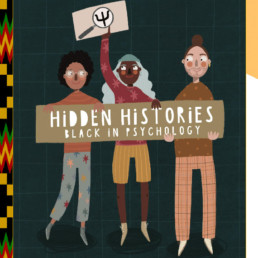
Written by Sinmi Ekundayo and Parise Carmichael-Murphy
Sinmi is a Year 9 student with an avid interest in politics and humanities subjects.
Parise is a PhD Education student who is passionate about decolonising the curriculum and widening access to the psychological professions.
Hidden Histories: Black in Psychology celebrates the contributions of Black people to the field of psychology and its allied professions. It is an open resource for people of all ages who are interested in psychology’s past, present and future. The booklet encourages young people to develop critical thinking skills by exploring ideas of anti-racist psychology, social change and activism, race and racism across psychological practice, and racial disparities in mental health. It also introduces readers to the requirements and steps needed to pursue a career in psychology and highlights how a range of skills, qualifications, and experiences can inform and shape our interests and expertise in psychology.
Parise Carmichael-Murphy and Adam Danquah are co-authors of Hidden Histories: Black in Psychology; they developed the resource in the hope that it has the potential to inspire future generations of anti-racist psychologists. Sinmi Ekundayo is listed in the ‘Acknowledgements’ of Hidden Histories: Black in Psychology as one of many contributors who helped to support and develop the book.
Sinmi was invited to review Hidden Histories: Black in Psychology by her teacher Laura Morris. Sinmi took a printed copy of the booklet home and reviewed it over a few weeks. Sinmi provided some really insightful feedback that highlighted areas of interest and some spaces for improvement. Sinmi’s comments highlighted some of the terminology used that could be better explained and in response, we added the term ‘cultural competence’ to the glossary.
Next, Parise invited Sinmi to collaborate on a blog post to highlight Hidden Histories: Black in Psychology. Some of the feedback and comments from Sinmi’s review have been expanded on in this blog:
“The fact that African Psychology is such a new concept that I have never even heard of it is astounding. It seems so simple when you think critically, obviously the culture you grow up in will affect the way your psyche functions and will not align with a completely different culture’s way of interpreting the human mind. It’s fascinating! I love this booklet so much.
I’ve always felt a bit of alienation from psychology as it always felt like a very white field to go into and now I understand why. Honestly, if the goal of Hidden Histories: Black in Psychology is to get more Black students into psychology it will succeed. Hidden Histories: Black in Psychology introduces psychologists that are telling our stories and interpreting them in a way that feels personal.
The poem at the end by J.Chambers is beautifully written. I love the ‘Useful Links’ section at the end where they list all the organisations that were made for Black education by Black people, it makes me feel so hopeful, especially since I have first-hand experience with some of them. It’s good to know someone is looking out for us. A lot of the time I was stopping to look further into new ideas and people I was being introduced to.
I sincerely believe that keeping Hidden Histories: Black in Psychology out of the curriculum is a disservice to ourselves. It would help Black students feel a stronger connection to themselves and psychology and I believe it would endow non-Black students with a sense of cultural empathy. The exemplary Black psychologists introduced in the booklet would intrigue anyone, but especially young Black students (such as myself) who will finally see themselves reflected in a field that feels very exclusive to rich white men.
This booklet is tremendously helpful in increasing Black students’ confidence in their ability to succeed in psychology in a way that isn’t too distant or convoluted. I’d recommend this to everyone, regardless of race. It’s genuinely an interesting insight into psychology that anyone would be interested in.”
To read, download and share the Hidden Histories: Black in Psychology resource, please use the following link: https://gmhigher.ac.uk/resources/hidden-histories-black-in-psychology/
We thank Laura Morris, our teacher and friend, for supporting us both to connect and collaborate on this blog post. Laura is Head of Religious Studies and Citizenship at Cedar Mount Academy and has a whole-school responsibility for anti-discrimination.
‘There was no one left to speak out for me’
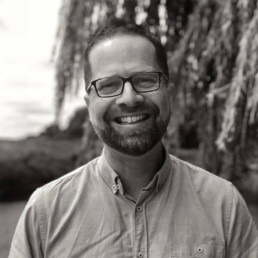
Written by Matthew Savage
Former international school Principal, proud father of two transgender adult children, Associate Consultant with LSC Education, and founder of #themonalisaeffect.
Over the past week, most of the candidates for the leadership of the UK government have been seeking power in part through rabidly attacking an already marginalised and vulnerable group, in scenes reminiscent of some of the most repugnant moral panics in the darkest corners of history.
Every day, my two adult trans kids wake up to a world whose media and politicians render their very existence problematic, dangerous and contingent. This week, along with the hundreds of thousands of other trans and non-binary people in the UK, they are especially under attack.
In order to help my children, and an entire community, gain and retain protected access to the very same things you would wish for yourselves and your family – the right to be, love, and be loved unconditionally – I would like to invite you to consider some of the following steps:
🏳️⚧️ LEARN: In a time where lies run rampant, read and discover the truth about trans identity and what it means to be trans or non-binary today. I provide training for schools across the world on this, and I am happy to signpost resources on any possible question you might have too.
🏳️⚧️ LISTEN: Listen to the voices of trans and non binary adults and young people. Here is a very powerful, short film which makes this point far more powerfully than I can: bit.ly/3yHxGJ2. And listen to my podcast, “Jack and Me”, on Apple (apple.co/3HI5SXA), Spotify (spoti.fi/3MqC3OU) or wherever you get your podcasts.
🏳️⚧️ CHALLENGE: Once you have listened and learned, be brave enough to challenge and inform others. This is where the most potent activism happens – in everyday conversations. This is where minds are changed.
🏳️⚧️ ADVOCATE: Speak truth to power. Our government and our media need to be held to account. And give voice to the voiceless. There are lots of ways we can do that, from letters to petitions, and in the very choices we make.
I believe that our country is so much better than this. I believe that, in years to come, we will look back at this time with the same horror and shame with which we remember the provenance of Section 28.
But I also believe that the only way that the benevolent many can drown out the noise of the hateful few is if we do not stay silent. In this, I am reminded of Niemöller’s 1946 poem:
First they came for the Communists
And I did not speak out
Because I was not a Communist
Then they came for the Socialists
And I did not speak out
Because I was not a Socialist
Then they came for the trade unionists
And I did not speak out
Because I was not a trade unionist
Then they came for the Jews
And I did not speak out
Because I was not a Jew
Then they came for me
And there was no one left
To speak out for me
Please stand with me, and speak out for my two children too – because #TransRightsAreHumanRights. 🏳️⚧️
Education DEI Calendar 2022-23

Written by DiverseEd
Diverse Educators started as a grassroots network in 2018 to create a space for a coherent and cohesive conversation about DEI. We have evolved into a training provider and event organiser for all things DEI.
We know that it is really hard to keep on top of all of the awareness and celebration days, weeks and months to include in the school calendar!
We also appreciate that it is equally difficult to know when to schedule/ host a DEI event without causing an unintentional clash or how to find out what DEI events are happening.
So we are proposing a work-in-progress solution which will evolve and grow as others contribute to it to co-create a comprehensive resource to make all of our lives a little bit easier…
The Education DEI Calendar 2022-23 is a draft – it is not perfect, it is not complete and it is in no way trying to exclude any key dates! Please bear that in mind as you review it and share solutions instead of problems if there are things you would like to suggest we add/ change as it evolves.
At the moment it captures lots, but not yet all, of the key dates from the following free resources which we signpost to people in our network:
- The CIPD Inclusion Calendar 2022
- The Dual Frequency Diversity, Equality and Inclusion Calendar 2022
- The Inclusive Employers’ Diversity and Inclusion Calendar
- The James Wants to Know You Diversity Calendar
- The NAHT Equality, Diversity and Inclusion Calendar 2022
- The NHS Diversity, Equality and Inclusion Events Calendar 2022
We have collapsed lots of these dates into a spreadsheet to make it more educator-friendly – so that you can filter by month, week, day and date to see what is going on. (You could also copy and paste it alongside your school calendar or your school’s assemblies schedule to cross-reference where themes are being explored).
We have not yet added all of the religious and cultural days as this will probably need another column as there are so many dates to be aware of. This will be the next layer of detail so keep checking back as it evolves over the summer break ready for the new academic year and start of term.
Note that when there is more than one theme on any given day/ week/ month we have sorted them by A-Z so that there is no perceived hierarchy. Also that when an awareness week is split across two weeks we have shifted it to the week it falls in the most.
Remember that you always have creative license to make these dates work for you, your school and your community – for example, some themes might need an awareness assembly before it falls on the calendar, others may require a celebration event following a key date. Consider how to streamline how many of the dates you want to mark so that it does not create overwhelm for staff nor students.
We have highlighted the weekends for all of the grassroot networks who host DEI events – the idea is that organisations in our network will be able to edit/ add dates of events with contact details and links to register/ book a ticket.
Do help us grow and improve the Education DEI Calendar 2022-23 by making suggestions and giving us feedback here. We hope you find draft 1 helpful to get you started!
Parents overwhelmingly support LGBT+ inclusive education and students want it, so how do we get started?

Written by Rob Ward
Education Programmes Manager at Just Like Us
LGBT+ inclusive education has a history of being intensely scrutinised. Social media continues to bubble away, highlighting the dynamic landscape of support for, and respect of, LGBT+ people, meanwhile educators grapple with exactly what is classed as “timely” and “age-appropriate” for LGBT+ inclusive education within RSE.
Without skipping a beat, Ofsted is fulfilling its commitment to reviewing schools for their adherence to RSE guidance – guidance which became compulsory for schools in the midst of a period of upheaval in education and wider society not seen in living memory. Educators currently find themselves juggling advice from exam boards, a student body still reeling from isolation and disruption over the last two years, and ever-growing working hours to try to bridge the gap between the two. The backdrop that LGBT+ education finds itself in today could not be more crowded, with competing stakeholders from across society offering opinions on what should be happening in our schools.
Independent research published by Just Like Us on the most varied stakeholder of them all – children’s parents – has found that the overwhelming majority is supportive towards LGBT+ inclusive education. 82% of UK parents believe that it is ‘important’ for their children to learn about LGBT+ families, such as some pupils having gay parents. However, parents also reported a lack of resources to help with this – only 34% said they felt their school was adequately resourced to help educate their children and 33% have never spoken to their child about what LGBT+ means.
In the context of increased commentary and scrutiny on LGBT+ in education, these findings highlight the importance parents place on fully inclusive education for their own children. It’s a clear signal that parents are looking for teachers to take the lead and support them in providing high quality, fully LGBT+ inclusive education for their children, as they do across other areas of the curriculum. Students report the same; previous research has highlighted how the majority of young people are looking for LGBT+ inclusive RSE education, alongside subject curriculums that embed LGBT+ inclusion throughout (79% and 67% respectively). More than half of LGBT+ pupils are looking for support from their teachers to set up inclusive initiatives like Pride Groups for LGBT+ and ally pupils to help a wider network of their peers.
When taken together, these findings should represent a green light to educators to push for inclusive education. Parents are expecting it, students are asking for it, and all the while Ofsted is continuing to check for it. So how can teachers go about it?
Engaging in visibility days, LGBT+ History Month and School Diversity Week throughout the year can be powerful, visual ways that a school can demonstrate its commitment to building safe, inclusive environments for all its students. Sue Sanders’ work on usualising vs actualising LGBT+ topics within subject curricula also offers a strong framework to review and edit schemes of work to embed a variety of stories and viewpoints within existing topics across the school.
Beyond engaging in visibility days and reviewing who and what gets taught about, setting up LGBT+ and ally groups is the best way to make long-term change. We help schools to set up and run these on Just Like Us’ Pride Groups programme, by providing staff and Student Leader training as well as ready-to-go resources for just £99 a year. Pride Groups also help to incorporate inclusion and celebration of LGBT+ lives within a school’s ethos, and provide a platform for student voice to help guide further development of inclusivity within schools long term.
While the backdrop for LGBT+ inclusion may be loud, dissonant and confusing right now, educators are used to cutting through this. Parents want their children to be educated about LGBT+ lives, while students continue to show a desire to learn about them. More than ever, teachers should feel empowered to explore how they can incorporate LGBT+ stories within their teaching and dispel misinformation, putting their fine-tuned teaching practice and pedagogy to use to meet their students where they are, helping them along their journey to exploring and celebrating the LGBT+ lives and history around them.
SEND Perspective: Why is it important to introduce intersectionality conversations in UK schools? Exploring seven top tips to address it.
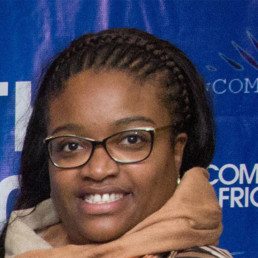
Written by Dilma de Araujo PhD (c)
SEND specialist. She has more than ten years of experience in education working in different educational institutions in the private and public sectors from early years to higher education levels, addressing special education needs; education policy research; gender inclusion and diversity.
‘A year nine boy of Black Caribbean heritage, claiming free school meals and with special education needs to represent a ‘typical’ student likely to be excluded from school.’
(Hawkins, 2019 p.14)
The Special Education Needs field involves a broad spectrum, where intersectional topics and issues such as gender, race and socioeconomic status are susceptible to emerge and often become a matter of great concern if the appropriate support and awareness initiatives are not in place. Hence, reflecting in the above statement by Hawkins (2019), it suggests that there are some significant points concerning financial, social and academic disadvantage and vulnerability indicators that should be addressed differently in our schools and educational institutions, raising awareness and incorporating a culture of dialogue, involving parents, carers and local communities actively in dynamic and creative activities in which different participants and agencies work in constructive partnership and collaboration (e.g. mental health and wellbeing practitioners; Local Authorities representatives, teachers, special education needs coordinators, local and national community activists and artists) aiming to improve not only black students, but all the multicultural and non-multicultural spectrum of school.
Thus, the role of schools, teachers and educational leaders can represent a crucial transformational factor. Hence, schools are designed to be a place where inclusion patterns and strong affinity bows of compassion, understanding and unity are consistently nurtured by adults, children and local communities. Aiming to generate diversity and equal dimensions within our multicultural society. To provide a healthy, safe and inclusive teaching and learning environments. Thus, school leadership teams have the responsibility to explore and address the following issues:
- Bias in the assessment process indicating over, under, misidentification and diagnosis;
- Rational parental response to historical discriminatory bias in the identification;
- Assessing migration’s resulting in different family health and cognitive endowments;
- Differential parenting behaviours and home learning environments;
- Differential experiences of deprivation between ethnic groups (Haye, 2021).
School senior leadership teams’ responsibility towards the implementation of an inclusive and diverse curriculum, programmes, initiatives and cultural activities in order to improve the multicultural perspective in their schools, taking into consideration students mental, cognitive, physical, emotional conditions, needs and circumstances raising the bars towards a positive learning performance and outcomes. In this line of thought, seven essential foundational strategies focus on the improvement of a culture of dialogue and reflective approaches concerning language, thoughts and actions, aiming to clarify different points of view and perspectives related to race, social, cultural inclusion.
Tip 1: Nurturing a culture of dialogue
Promoting dialogues involving racial matters in school can reduce bias, prejudice and pejorative attitudes. Thus, it is important reshape the teaching and learning approaches and behaviours may improve mutual respect, compassion, self and multicultural knowledge. E.g. cooperation involving students, teachers and other school staff. They can organize special pod-cast, webinars and school radio where life testimonials and experiences could address topics related to racial discrimination, macroaggressions and microaggressions.
Tip 2: Promoting reflection in and on action
Applying reflective practices to enhance teaching and learning is crucial to obtain valuable and effective results. Reflecting in-action provides the opportunity to explore and evaluate the academic practice and activities while the learning is taking place, opening the horizons not only for behaviour alignments and changings but also delivering and feedback strategies. Thus, promoting reflection-on-action practices is essential to improve the educational experience and activities built after interaction between teachers and students, mitigating biased attitudes and thoughts during teaching and assessment practices.
Tip 3: Preparing for and welcoming different perspectives
For many children and young people, teachers and school endeavours are the primary sources of information and knowledge. Hence, education institutions should be ready to face and address complex ways of think, behaviour and acting. To introduce potentially challenging conversations about race is essential to give quality training to teachers and staff, organizing regular meetings with parents and local communities and invest in multicultural representation in senior leadership posts in the educational organization.
Tip 4: Identifying students’ mental & emotional, cultural and traumatic journeys
The mental, emotional, cultural and traumatic journeys can impact and determine how children and young people absorb information and knowledge. Therefore, continuous evaluation, assessing, screening and reviewing students is vital to support teachers and students. Teaching practices can improve effectively when students’ needs are identified and properly monitoring based on child-centred approach, diverse curriculum, strong values and beliefs. Consequently, a positive impact can be generated in students’ performance, experiences and outcomes.
Tip 5: Encouraging the use of inclusive and diverse materials, resources and activities
The art of generating a culture of promoting human and racial rights, educational acceptance between adults and children, and constructing positive and dominant social and educational role models becomes the lynchpin of approaching complex topics. As a result, curricula, educational materials, schools’ displays and decorations, learning and leisure activities can be practical tools to combat the nature of privilege, supremacy and oppressive attitudes.
Tip 6: Exploring affective and embodied dynamic of learning
Starting from years early to higher education, recognizing and embracing the critical pedagogy in the daily schooling environment impacting teaching and learning practices through literature and other forms of creative arts aiming to explore and obtain the best of students’ ideas, beliefs, thoughts and aspirations. Learning dynamics could pass through a moment in which creative reflections are based on realistic expectations about a sense of identity, belonging, and existence, thus they could be co-related with all topics, disciplines and courses.
Tip 7: Creating a safe community learning environment
Local communities are an extension of the classroom and learning environment. It is crucial to the communication, interaction and mutual respect between school staff, local organizations and communities. Solid connections can be established through parents, governors and charities. It can help exchange experience, knowledge and update policies and general information.
In this context, addressing race paradigms and curriculum decolonization in the special education needs field can potentially represent a way to liberate bias, discrimination, preconceived thoughts, pejorative language. Additionally, all the changes and adjustments should be raised with the desire to generate productive and constructive empowerment by implementing effective anti-discrimination, SEND race and multicultural policies (also addressing migrants and refugee students). Thus, the field of SEND involving multicultural, race and education can essentially be empowered when individuals from different social, cultural, racial and educational backgrounds join forces not only to change policies but to be the ‘maker, developer and keeper’ of each one of them, aiming to embrace an open door of opportunities to nurturing the teaching and learning best practices.
Reference:
Hawkins, A. (2019) School Exclusion: The Parent Guide. London.
Haye. M, (2021). Special Education Jungle. Finding the racial minority voices in SEND. Retrieved [07/12/2021] from https://www.specialneedsjungle.com/finding-racial-minorityvoicessend/?utm_source=hootsuite&utm_medium=linkedin&utm_term=special+needs+jungle+ltd&utm_content=SocialOroMedia.
PjBL, (2020) Project Based Learning Toolkit. Retrieved [17/12/2021] from https://project-based-learning-toolkit.com/reflection/.
Thurber, A., Harbin, M.B, & Bandy, J. (2019).Teaching Race: Pedagogy and Practice. Vanderbilt University Centre for Teaching, Retrieved [07/12/2021] from https://cft.vanderbilt.edu/teaching-race/.
New Music Track Supporting the UK’s Leading Neurodiversity Charity and Celebrating Difference, Inclusion and Equality, in Education and Beyond

Written by Gary Grange
Consultant and neurodiversity advocate with a passion for supporting young people who are neurodiverse and working with NGO’s and businesses to create positive social impact.
On the 24th June the Neurodiversity charity the ADHD Foundation launch the Umbrella Project which for the first time ever will feature a new dance track called We Will Rise, by songwriter, rapper and neurodiversity advocate J Grange (ft London Community Gospel Choir)
This project aims to help raise awareness of the 1:5 people who are neurodiverse and to celebrate equality in society, especially for those who are neurodiverse, many experiencing inequality and struggling in the education system.
What is neurodiversity?
Neurodiversity refers to the different ways the brain can work and interpret information. It highlights that people naturally think about things differently. We have different interests and motivations, and are naturally better at some things and poorer at others.
Most people are neurotypical, meaning that the brain functions and processes information in the way society expects.
However, it is estimated that around 1 in 5 people (around 20% of people in the UK) are neurodivergent, meaning that the brain functions, learns and processes information differently. Neurodivergence includes Attention Deficit Disorders, Autism, Dyslexia and Dyspraxia.
J’s educational experience
J experienced an horrendous time in education. As a young person with ADHD, which was not diagnosed until weeks before he sat his exams, he was constantly excluded from school and eventually sent to a Pupil Referral Unit. This impacted on his mental wellbeing and he suffered severe anxiety, depression and even suicidal thoughts.
Sadly, teachers and schools just did not know how to support J. With around 1:5 young people thought to be neurodiverse the education system needs to change. It needs to embrace the “difference” neurodiverse young people bring and to have a strength-based approach to learning.
The current statistics are both shocking and show that 39% of children with ADHD have had fixed term exclusions from school and that children with ADHD have more than 100 times greater risk of being permanently excluded from school than other children.
Compare this to the fact that around 35% of businesses owners are neurodiverse and you can very quickly see that with the right support neurodiverse young people can be successful.
Schools, academy’s, colleges and universities are slowly beginning to change but they need help.
J’s track is about his journey but also a message of hope and a call to end inequalities and divisions. To watch the music video from the 24th June and to support the need for the education to be more inclusive for neurodiverse young people please click here
If you are a school, academy, college or university for more information about neurodiversity visit the ADHD Foundation Neurodiversity Charity online, or follow on Twitter, Facebook and Instagram
On Kindness: Intentionality, #DEIJ, and Difficult Decisions

Written by Matthew Savage
Former international school Principal, proud father of two transgender adult children, Associate Consultant with LSC Education, and founder of #themonalisaeffect.
A few years ago, there was lots of talk about “random acts of kindness”, and many a school assembly took place across our schools, using that idea to encourage kind words and actions among and between staff and students.
However, I have since realised that kindness is never random. It is intentional. We make a conscious choice to be kind, or, conversely, not to be.
I reflected on this today, as a disabled, wheelchair traveller, treated like livestock at Madrid Airport: dumped in a corner and facing the wall, ignored, patronised and humiliated, and denied access to food, water or a bathroom, for 3 hours.
When finally pushed to the plane door, after every single able-bodied passenger and with minutes until take-off, I shared my experience so far, and then explained that I had mistakenly also been allocated a seat at the back of the plane, which I would not be able to reach without risk, pain, discomfort and delay, if at all.
I politely asked if the steward could request a passenger in a row further forward in Economy to swap with me, so as to avoid those things. They repeatedly, and emphatically, refused.
On hearing our conversation, a traveller in the very first Business row immediately stood up and insisted he swap with me and take my seat instead. The steward tried to persuade him not to do so, as he would lose his Business seat, but he made it quite clear that it did not matter, as my wellbeing and safety were more important.
I wish I could thank him properly. However, I suspect he would not mind. After all, when we intentionally choose kindness, we do so unconditionally and without expectation.
On the subsequent flight, I reflected further on this. In the leadership of our school communities, we also have the opportunity actively and intentionally to choose kindness, every single day – in our conversations and our actions; in policy and strategy; and in the decisions we make.
Sometimes this is easy, but when it feels difficult, we can and must still make that choice. We must ask ourselves what would be the kind thing to do. And then do that.
If kindness remains random, it will also be inequitably applied, and, in turn, perpetuate the marginalisation of those who need it most. Therefore, kindness should be at the heart of any #deij strategy too, and that strategy can help propagate intentional kindness as a result.
If we choose kindness, always, not only will kindness infuse the climate and culture of our schools, but others will follow our lead. Just like its absence, kindness cascades.
Does intentional kindness guide and permeate your school, or is it still random?
“Grandmotherly Duties” – Let Loose!
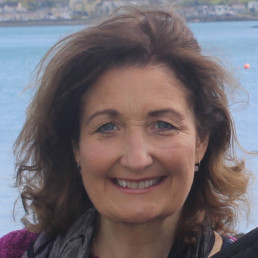
Written by Jackie Hill
An experienced teacher trainer, Jackie is a Founding Fellow of the Chartered College, Network Leader for WomenEdNW and Co-Founder / Strategic Leader for WomenEdNI.
NB This blog is suitable for all ages…
“Grandmotherly duties” – thoughts around this phrase have been rumbling in my head for some time. I’ve never been quite sure if, when or how I should share those rumblings and it was only on a recent trip to a “soft play” centre with my two favourite little learners that I decided it was time to “let loose”!
Firstly, I want to make it very clear that, in my experience, becoming a grandparent can be one of the best new roles that you can ever take on. However, I have been surprised to find that it can also bring an unwelcome “tag”…
Let me explain: in January 2019, both my husband and I moved to a more flexible working pattern (3 days a week) but the processes to arrive at that, and the perceptions regarding our motivations, were quite different.
For me, the consequence of my request for a more flexible working pattern, was that I had to accept a move to a new role, giving up the one that I had loved and had hoped to retain. Of course, this is a scenario which has faced many other women in education – I just had not expected it at that stage in my career. I had explained that I wanted to be more actively engaged in certain professional networks, interests and activities – all of which would actually have enabled me to carry out my workplace role even more effectively. These included DiverseEd, WomenEd (I’m Co-Founder and Strategic Leader in WomenEdNI and a Network for WomenEdNW), and The Chartered College (as a Fellow, and more recently Council Member).
Coincidentally I had become a grandmother a year beforehand and when the initial communications announcing the change in my professional role appeared, the focus had shifted. Yes, the explanation given for the move was that I wished to focus on other things, but only one was mentioned – “grandmotherly duties”! I was really taken aback as I felt it created such a false impression – so I asked for it to be changed immediately. And it was, straightaway, thankfully.
Now, anyone who knows me, also knows that I adore my grandchildren (more than one now!) and may be wondering why I would be so annoyed at this interpretation. Well, in my view it goes to the core of my identity or rather the way many people’s perceptions of identity change when they find out you’re a grandmother – you’re now “over the hill” / past your best / on the way out – too OLD! I subsequently discovered that one of my colleagues had a 4 year old much loved grandson but rarely spoke about him, for exactly this reason!
Of course, this is a reprise of something similar that many colleagues in education experience earlier in their careers when they are told “it’s time to just focus on being a mum”. However, when your children have grown up, you would think those judgmental assumptions would now be relegated to the past, so it’s a shock when they reappear in another way later in your career.
Jo Pellereau’s blog “Concentrate on Being a Mum” (and forget about work) outlines her experiences beautifully (Pellereau, 2020). Her assertion that “in many ways my commitment to education has been increased by my new identity as a mother” really resonates with me. My new identity as a grandmother has not only re-invigorated my commitment to education but has also taken it in new directions which have been both challenging and uplifting.
I asked my husband if anyone ever said to him “Now’s the time to focus on your “grandfatherly” duties”. His look of disbelief, said it all!!! Of course, they hadn’t!
This also got me thinking about “grandmotherly duties” – what are they? What could or should they involve…?
Of course, each grandparent’s circumstances are different, so there can be do fixed set of “duties”, job description or person specification for this role that would work for all. However, I’d like to share just a few grandparently duties that are important for me:
- Try to be a visible role model – for other grandparents, parents, carers and, of course, my family (especially the wee ones). Remain professionally active and involved, and, where possible, demonstrate that abilities, understanding, desire to keep learning and sharing do not have to cease to exist or be important, just because a person has this additional role.
- Continue to develop my “voice” to support schools and other education settings to become diverse, inclusive and equitable communities – where different families, like my grandchildren’s, and indeed all others, know and feel they belong.
- Look for ways to help my grandchildren discover the wider world outside their own little corner, so that they realise they are global citizens, and understand how that opens the world to them (as well as their responsibilities to look after it and one another).
- Help them to develop the joy of learning and also of reading all sorts of books (was it wrong of me to feel a little bit pleased when my grandson became upset recently because the library was closed!?!?)
- Spend time together and have fun.
What other “duties” have I missed? What would you add?
“DiverseEd; A Manifesto” feature in my day of grandmother duties because I took it with me to read at Soft Play! (Yes, I was the only Grandma doing that…) The wonderful Chapter on Age includes insightful stories and reflections of others, highlighting the underused and undervalued potential contributions that many older colleagues still have to offer. This also cuts across some of the other Protected Characteristics and, as the Editor for Chapter 4 “Marriage and Civil Partnership”, I’ve read, researched and reflected a lot about families and relationships, and firmly believe that ALL families should “experience the same positive environment, level of support, opportunities and VISIBILITY across the curriculum”. The fact that this includes families with, or even headed by, grandparents is sometimes missed.
So, in practice, how should that visibility work? In what ways could it break away from stereotypical images (rather than reinforcing them)? How should it be demonstrated through the staff in our schools and other educational settings too?
In reflecting on all of this, I’ve been reminded of the important role that my own amazing Gran played in my upbringing and her enduring influence on me. She lived with us and she was a wise, constant and loving presence, a cornerstone for our immediate, and indeed wider, family – while at the same time being an independent, working woman who read widely, and managed her own finances plus other responsibilities, whilst also supporting others. In her sixties, she travelled abroad for the first time, on her own, to Australia. She spent several months there, and wrote to us regularly to share her experiences – my brother still has the didgeridoo she carried back for him!
Similarly there are people like her today – who are ready to take on new challenges, to develop their professional and/or personal roles, and who are fit, willing and able to continue doing so. What a waste when we write them off, or high-handedly decide for them that it’s time to “focus on being a mother” or their “grandmotherly duties”. The choice should be theirs and roles need not be mutually exclusive.
Moreover, there is a clear case for employing older workers (Makoff A, 2021) – increased knowledge-sharing through a multi-generational workforce has been identified as a particular benefit. Makoff cites Stuart Lewis, founder of Rest Less (a digital community for the over-50s) who asserts that “demographic and societal changes including an aging population, delayed retirement and multi-generational workplaces will continue to be the direction of travel for a long time to come… the employers and HR teams that recognise this early, get ahead of the trend and embrace it early are going to be the workforces and businesses that thrive over the next decade.”
So I’ll leave you with some questions to consider:
- How do you view colleagues and others in your school community and/or education setting and/or networks who are grandparents (or are of an age that they could be grandparents)?
- Have you relegated them to the “former players” stand or are you making the most of their experience, expertise and possibly even renewed outlook and perspectives on education, learners and schools?
- How could you ensure that diverse families, relationships and roles are visible and valued in your classroom, staffroom / workplace and communications?
References
Pellereau J, (2020) Concentrate on Being a Mum. Available at: https://physicsjo.science.blog/2020/10/06/concentrate-on-being-a-mum/
Kara B and Wilson H (2021) DiverseEd: A Manifesto University of Buckingham Press
Makoff A (2021) How can employers embrace an age-friendly workplace Available at: https://dileaders.com/blog/how-can-employers-embrace-an-age-friendly-workplace-culture/
Facing The Challenges of Discrimination and Migrant Integration
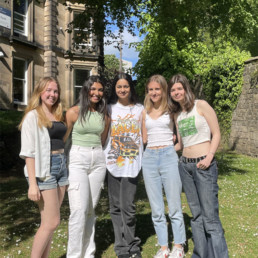
Written by Isabelle Watts
We are a Young Economic Summit Team from Sheffield Girls' who have reached the UK national finals. This is a topic we are all passionate about, and we have come up with a solution to reduce the discrimination migrants face.
As part of the Young Economic Summit we have researched the challenges migrants face and have developed a solution to mitigate these challenges. We are passionate about mitigating the discrimination migrants face and ensuring that they feel welcome into the countries which they choose to migrate to.
What challenges do migrants face?
Migrants face many challenges when they migrate due to discrimination from domestic born citizens. The media often fuels the discrimination by oversimplifying, misrepresenting or embellishing stories in order to attract attention. Consequently, people’s perception of migrants becomes negative and in many countries, such as the UK, migrants are seen as poorer, less educated and more likely to be unemployed than is the case. This creates barriers between migrants and domestic born citizens as they have pre made judgements of what they believe migrants to be.
However, it isn’t just the media that is exacerbating the challenges migrants face; it is also the policies implemented by the government. In recent weeks, the government has announced a new policy whereby any adult who comes to the UK without authorisation could be considered for relocation to Rwanda. Not only does this policy take away refugees’ control of their own lives and makes them more vulnerable to smugglers and traffickers, it also creates the idea that countries can pay to get rid of the responsibilities they signed up to under the 1951 Geneva Convention.
The desired situation:
The desired situation is a cohesive society where migrants and domestic born citizens are integrated and migrants feel welcomed into a country. Whilst migrants may inevitably face challenges, the aim is to try and support them as well as possible and remove the discrimination and intolerance of our society.
How to reach the desired solution:
One way in which we are trying to reach the desired situation is by conducting PSHE lessons on migration. In the long run this would reduce the discrimination migrants face as children will be taught what the different types of migrants are, what challenges they face, how to spot misinformation, as well as addressing the biases they may have already developed. Moreover, a supportive atmosphere will be created which encourages children to talk about their cultures and be proud of them. It is imperative that these lessons take place in primary school as by the age of 12/13, attitudes to race are fixed and become increasingly harder to alter. Although migration is in the PSHE curriculum, it isn’t compulsory and many schools avoid it. Therefore, we propose that set lesson plans are made which are compulsory to teach in PSHE lessons.
Another aspect of our solution is a widespread social media campaign reducing the misinformation spread about migrants. As part of this we have created eye catching social media posts that have facts that break down the stereotypes surrounding migrants. Consequently, people’s perception of migrants will begin to change and prejudices will be broken down.
Overall, we propose a twofold approach that takes into account the short and longer term. The national anti-racism media campaign will reduce discrimination in the short run, whilst the PSHE lessons will have a longer term effect. We believe that this is the most efficient strategy of reducing the discrimination migrants face due to misinformation, and allowing society to become more cohesive.
Please visit our website to find out more about our research, and fill in the form to show support for our solution.
Website:https://sites.google.com/she.gdst.net/migrant-integration-challenges/home
Form:https://docs.google.com/forms/d/1p363lLoHvigT2xWaZ0GnmNlQ-EOUrSsasSRbOsjKiG0/edit
Bibliography:
- Conzo P and others, ‘Negative Media Portrayals Of Immigrants Increase Ingroup Favouritism And Hostile Physiological And Emotional Reactions’ (2021) 11 Scientific Reports
- ‘What Are The Predominant Stereotypes About Immigrants Today?’ (Re-imagining Migration) <https://reimaginingmigration.org/what-are-the-predominant-stereotypes-about-immigrants-today/> accessed 15 May 2022
- Beirens H, and Davidoff-Gore S, ‘The UK-Rwanda Agreement Represents Another Blow To Territorial Asylum’ (Migration Policy Institute, 2022) <https://www.migrationpolicy.org/news/uk-rwanda-asylum-agreemen> accessed 15 May 2022
- Beirens H, and Davidoff-Gore S, ‘The UK-Rwanda Agreement Represents Another Blow To Territorial Asylum’ (Migration Policy Institute, 2022) <https://www.migrationpolicy.org/news/uk-rwanda-asylum-agreemen> accessed 15 May 2022
- Barnes D, ‘Why Helping Children Understand The Complexities Of Migration Is Vital’ (Teachwire, 2022) <https://www.teachwire.net/news/why-helping-children-understand-the-complexities-of-migration-is-vital> accessed 15 May 2022
- ‘Plan Your Relationships, Sex And Health Curriculum’ (GOV.UK, 2022) <https://www.gov.uk/guidance/plan-your-relationships-sex-and-health-curriculum#using-external-agencies> accessed 16 May 2022
DEI in an International Setting
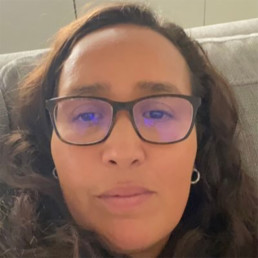
Written by Esther Mustamu-Daniels
Esther Mustamu-Daniels has 20 years of teaching experience working in London and the Middle East as a Class teacher, Education officer, Middle Leader and DEI Lead. Currently working at British School Muscat, Esther co-leads the DEI work across the whole school.
Many international schools are on or starting their journey of awareness of diversity, equity and inclusion. Because cohorts in these schools are so diverse by nature, often staff feel that there are no problems and that racism/discrimination is not a factor in the schools. This is usually very far from the truth.
Be brave; be vulnerable and start the challenging and honest conversations that are needed for change to take place.
Because of recent high profile events, diversity, equity and inclusion is a necessary space in all educational settings and that international schools, who send their alumni to universities all over the world, would do well to support, inform and equip students with knowledge and language to engage with the different topics around DEI.
How do schools start tackling, delivering and addressing these needs?
Start with the staff: build open conversations. It is important to know that not everyone is at the same place on their journey and also that there are different opinions. Gathering the ‘tone’ of your school as well as allowing safe spaces to share experiences is a key factor. What is important is that this is not only talk; action is also needed. This is an emotional and difficult journey so be sure to provide space and time to reflect and learn.
Action: Build a plan of how you will move forward. You may need to conduct a survey or gather some research and data from your school’s stakeholders to help you focus on what the priorities are in your specific setting. Are there specific needs or policies that need addressing first? This will help to focus on each step and also assign roles or tasks to specific people. This should be flexible so that it can be adapted along the way.
Leadership: Is there someone leading the work? Do SLT support and value the work being done? Does your leadership understand the why and how? This is important because without this it is extremely difficult to implement significant change. Leadership needs to take accountability for the work being done in their school. Is that person being paid?
Support: This is also an essential element. Who is supporting the people completing the work? Are they being emotionally supported as well as practically? The people leading or sharing this work may have been personally impacted or triggered by the issues raised; how are they being supported?
What is important to note is that action in any form is good and a positive step in the right direction. Addressing and tackling these issues will take time and for long lasting impact will need to be embedded in the culture of your school or environment. This is not a badge or a t-shirt; this is a cultural shift of readdressing mindsets.
If you are involved or starting up; learn, speak and support. Being an ally and everyone doing their part is imperative. There is so much work being done at the moment. Twitter is an excellent source of examples, webinars and organisations that can support you on your journey.

